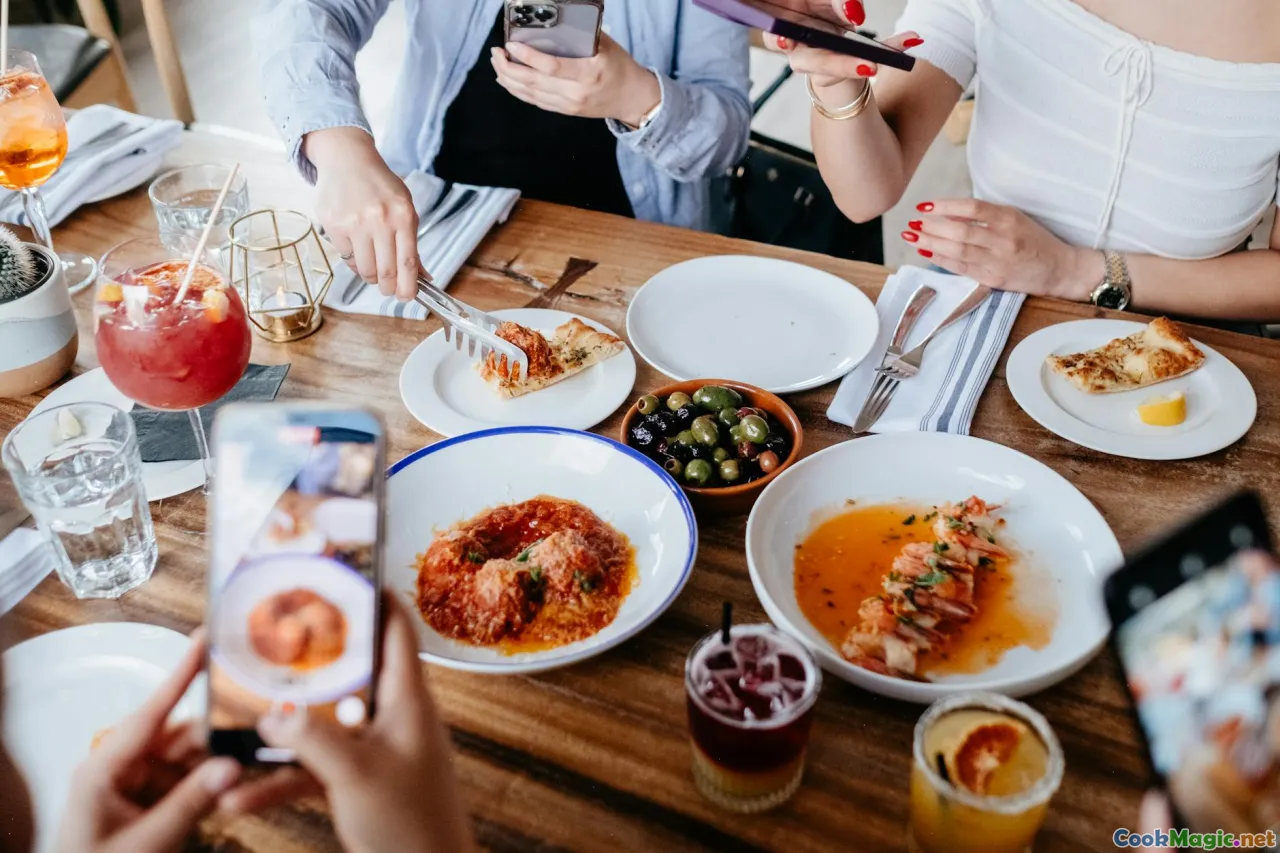Iconic Movie Dishes That Inspired Real Life Menus
8 min read Explore how legendary films have shaped real-world menus, inspiring chefs and food lovers to recreate iconic dishes that transcend the screen. June 16, 2025 09:05
Iconic Movie Dishes That Inspired Real Life Menus
Imagine biting into a perfectly crafted burger that seems straight out of a 1950s American diner scene or savoring a steaming bowl of ramen that transports you to the bustling streets of Tokyo seen on the silver screen. Movies have long been a powerful medium not just for storytelling but for shaping our perceptions of culture, fashion, and—critically—food. Over the decades, certain dishes showcased in films have transcended their cinematic origins, inspiring real-world menus, restaurant concepts, and even culinary trends.
The Movie-to-Menu Journey: An Introduction
Cinema is a mirror reflecting society’s tastes and dreams. A well-crafted dish in a film can evoke nostalgia, aspiration, or a sense of adventure. When a beloved character indulges in a signature dish, viewers often find themselves craving that exact experience—be it the comfort of a hearty breakfast or the zest of an exotic delicacy.
The phenomenon of movie-inspired cuisine isn’t merely about mimicking; it’s about capturing the essence, the emotion, the cultural backdrop that made the dish memorable. This has led chefs and restaurateurs worldwide to bring these cinematic creations to life, turning screens into tangible, edible experiences.
Classic Examples of Iconic Movie Dishes
1. **The Big Kahuna: The Krabby Patty from "SpongeBob SquarePants" (though animated, its influence is real)
While technically animated, the Krabby Patty has become a cultural icon, inspiring burger joints to craft their own "under-the-sea" themed menus. Its secret formula, crispy patties, fresh lettuce, and special sauce evoke childhood wonder and playful culinary innovation.
2. **Ratatouille: From Screen to Plate
"Ratatouille," the charming Pixar film about Remy, the rat with a refined palate, spotlighted the rustic French vegetable stew that has become synonymous with comfort food and culinary finesse. Chefs worldwide have embraced the dish, reimagining it with modern twists—smoky, roasted, or infused with exotic herbs—yet always preserving its humble elegance.
3. **Julia Child's "Mastering the Art of French Cooking" and the 'Julie & Julia' Effect
Though not a single dish, Julia Child’s influence on American cuisine is immortalized through the film "Julie & Julia." Her boeuf bourguignon, a slow-braised beef in red wine, became a sensation, prompting countless home cooks and restaurants to incorporate French classics into their menus.
4. **The Breakfast at Tiffany’s Green Cocktail
Audrey Hepburn’s iconic breakfast scene introduced the world to the elegance of a simple yet sophisticated green cocktail. Its visual appeal has inspired countless brunch menus, emphasizing style and substance.
5. **The Pulp Fiction In-N-Out Double-Double
In Quentin Tarantino’s "Pulp Fiction," the characters’ love for In-N-Out burgers ignited a nationwide craving that persists today. Many burger joints now pay homage by offering “Pulp Fiction specials,” celebrating fast food as a cultural touchstone.
6. **Eat Pray Love’s Pasta and Italian Comfort Food
Elizabeth Gilbert’s memoir-turned-movie rekindled the romance with Italian cuisine. From rustic pasta dishes to vibrant antipasti, restaurants around the world expanded their Italian offerings inspired by the film’s celebration of life and love.
How Films Shape Culinary Trends
Cultural Impact and Tourism
Films often immortalize dishes that become pilgrimage points for fans. Think of the numerous cafes and bakeries in Paris inspired by movies like "Amélie" or "Midnight in Paris," where tourists indulge in croissants and café au lait, recreating cinematic moments.
The Power of Nostalgia
Nostalgic movies often revive forgotten recipes or introduce regional specialties to a broader audience. For example, the resurgence of Southern comfort foods in the U.S. can be linked to films that romanticize rural life and traditional cooking.
Innovation and Fusion
Filmmakers exploring diverse cultures have opened doors for chefs to experiment with new ingredients and cooking styles. The vibrant street foods depicted in "Chef" or "The Hundred-Foot Journey" have influenced menus that blend global flavors.
Personal Reflections: From Screen to My Kitchen
As a food enthusiast and storyteller, I’ve often found myself recreating dishes inspired by movies. One memorable instance was attempting to make the legendary "Lobster Thermidor" after watching "The French Lieutenant’s Woman." The process was meticulous—sautéing the lobster with a rich cognac sauce, then gratinating it with cheese. The aroma filled my kitchen, and tasting it transported me straight to a Parisian bistro.
Similarly, the comfort of a bowl of ramen from "Lost in Translation" inspired me to explore Japanese culinary traditions, experimenting with homemade broth, fresh noodles, and perfectly soft-boiled eggs. These experiences deepen my appreciation for how film can ignite culinary curiosity.
The Future of Movie-Inspired Menus
With the rise of food tourism, pop-up restaurants, and immersive dining experiences, the influence of cinema on gastronomy is poised to grow. Concepts like "Game of Thrones" themed banquets or "Star Wars" galactic eateries are already captivating audiences.
Moreover, virtual reality and interactive dining could allow patrons to step into scenes, taste dishes, and even cook alongside cinematic characters, blurring the lines between media and cuisine.
Final Thoughts
The culinary world is continually shaped by stories, memories, and cultural exchanges. Iconic movie dishes serve as edible bridges connecting us to characters, places, and moments that define our collective imagination. Whether it’s the simple elegance of a French stew or the playful indulgence of a cartoon burger, these dishes remind us that food is a universal language—capable of inspiring, healing, and creating community.
Next time you watch a film, pay attention to the food scenes. They might just spark your next culinary adventure, turning your kitchen into a set where your favorite stories come to life through taste.
Eat well, dream big, and let cinema be your culinary muse.









